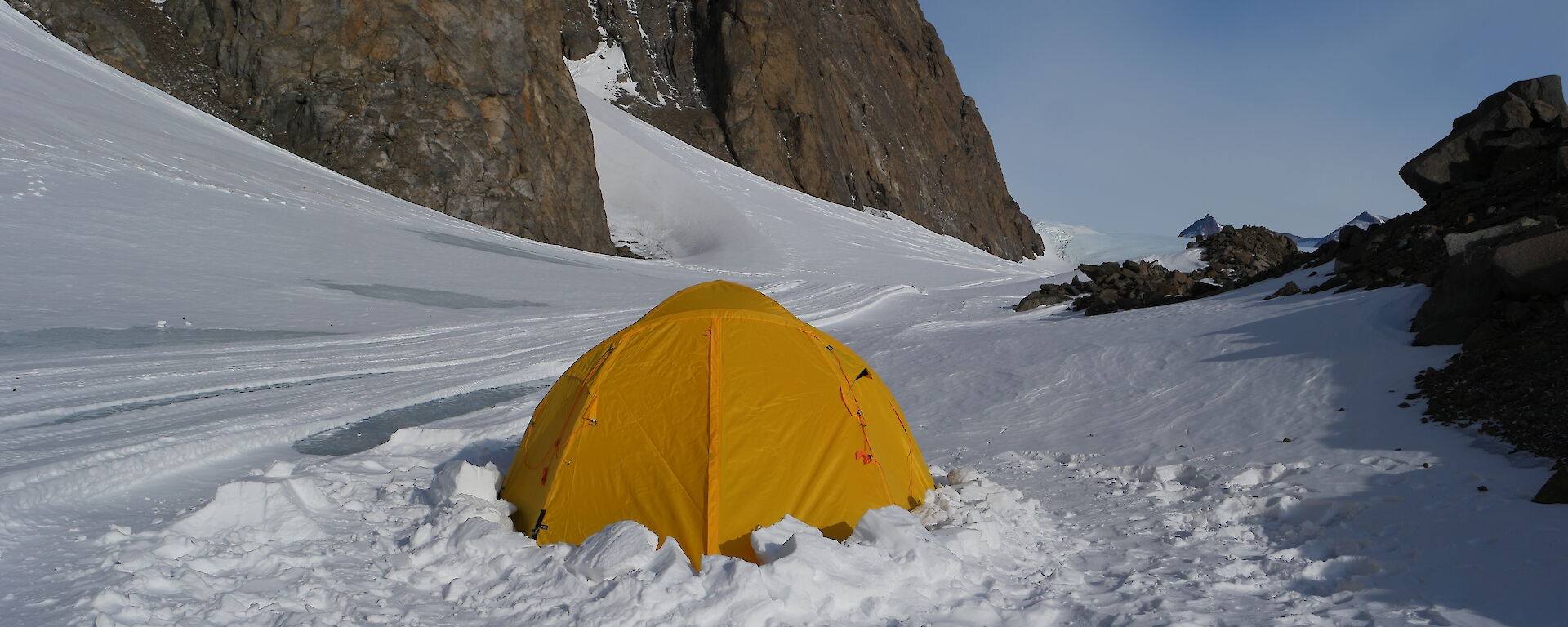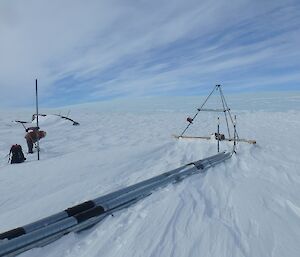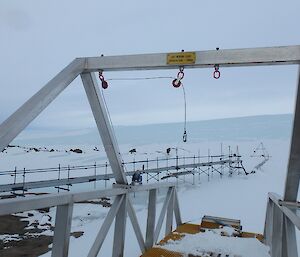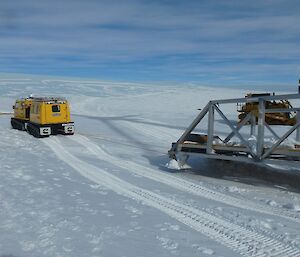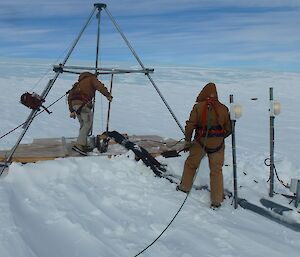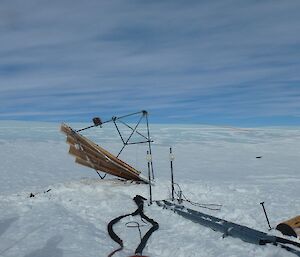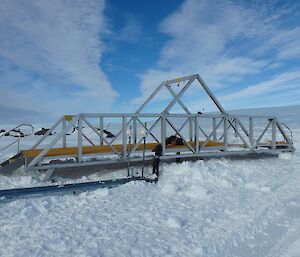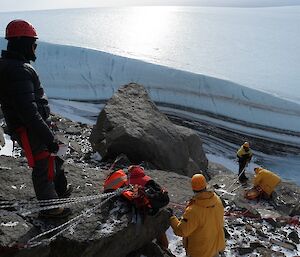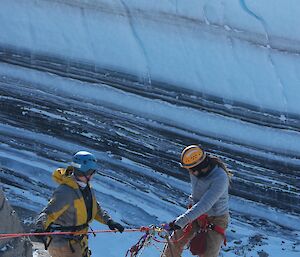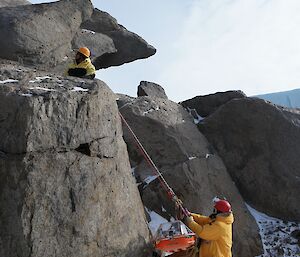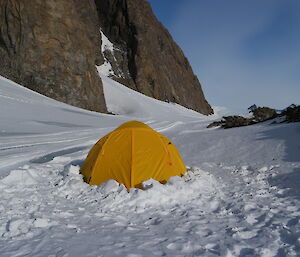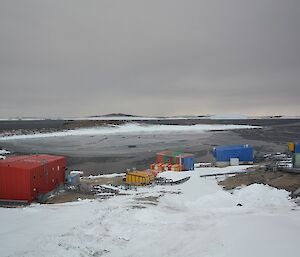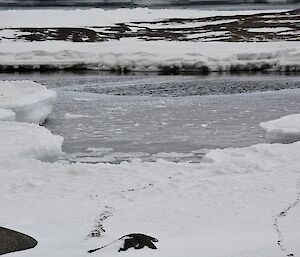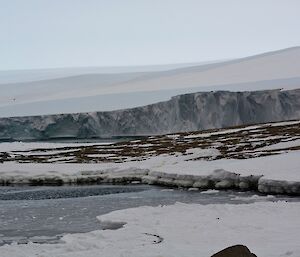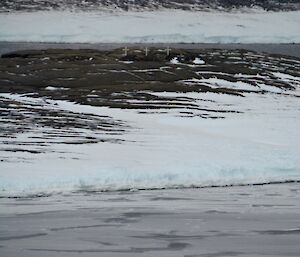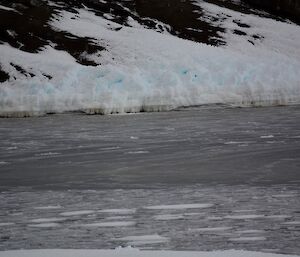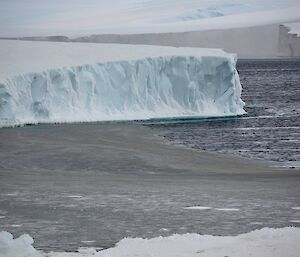Each winter season, all stations are required to have a technical search and rescue (SAR) team. Here at Mawson we have two teams between the 14 expeditioners that rotate on a weekly basis. This rotation correlates with the fire team and the on-call tradespeople. That way we each have a week off-call, every other week.
We commenced the search and rescue training program this week, run by Field Training Officer Tony D. Mawson is the only station that has a field training officer (FTO) posted over the winter. This is due to the shipping schedule resulting in time restraints for training here at Mawson. This is a real privilege for us because we get the whole year to hone our skills and use the knowledge of the FTO. We were due to go for a three day training session on Thursday but blizzard conditions made this impossible meaning we had to settle for two days: Friday and Saturday. We took out a Hägglunds (tracked vehicle) which achieves low ground pressure through full-length, wide rubber tracks and a lightweight body. The two sections of the vehicle are articulated, allowing it to keep contact with the ground over broken terrain. The ground pressure is low enough that the vehicle can traverse loose snow without sinking. The vehicle is amphibious, and propelled in water by its tracks. We also took two Honda quad bikes which also perform extremely well in the conditions, and headed up to Rumdoodle hut which is around an hour from station.
After a stop at the hut, and a cup of tea with pizza to warm us up after the quad ride, we drove around to Fern Hill where there are some nice rock walls and ice cliffs which provide a good setting for training exercises. The location is also nicely protected from the wind. Friday consisted mainly of stretcher raises and lowers off a small cliff. The process involves setting the initial anchors to raise and lower the stretcher off. Off these anchors the FTO taught us how to set up the main line and belay line. Each of us has a role: main line attendant managing the main line the stretcher is lowered on; belay attendant managing the belay line in case the main line were to fail; stretcher attendant who travels with the stretcher and patient down the cliff to manhandle it over ledges and any other obstacles; edge attendant who relays information and instructions from the stretcher to the main line; and finally the SAR team leader who oversees the rescue and keeps an objective eye on safety and procedure. It is a beautiful setting at Fern Hill which made for a really interesting and enjoyable day.
That night, four of us slept in the hut at Rumdoodle whilse the other two slept in the new polar dome tents that the Australian Antarctic Division are using. I was fortunate to get to test the new tent out with two sleeping bags, a down jacket and a down mattress. It turned out to be really comfortable and warm despite the fact that it was about –17°C. I had to get up for a call of nature at 0230 and was greeted by an amazing display from the southern lights. They stretched across the entire horizon in addition to being reflected off the ice, making for a pretty awesome sight. The silence that night also really stood out for me: the only sounds were of ice cracking and moving underneath us, and the occasional rock falling down the face of the mountain range behind us. It is these sort of things that makes Antarctica such an alluring place.
Saturday morning we were treated to a culinary sensation in the form of a Fray Bentos pie. The Fray Bentos is the most recognized of all tinned pies, the classic Fray Bentos steak and kidney pie was originally launched in 1961. This great value option contains 750 calories in the form of delicious pieces of steak and kidney, covered in tasty beef gravy and topped with puff pastry perfect for an Antarctic breakfast. And the best part is, there no washing up. Once the pies were consumed it was time to do some training exercises in the Hägglunds. The main point of the exercise was to master the use of the GPS and radar technology that they are kitted out with. We covered the windscreen with a foam mat to simulate blizzard conditions. We then drove to a particular waypoint where we had parked a quad bike earlier simulating a stranded expeditioner. Once we approached the waypoint we switched on the radar and waited for the dot to appear that was the quad bike. We then slowly approached the quad guided by the GPS and radar. Once we were within 25 metres of the target, one person would get out of the Hägglunds with a Bluetooth headset on and were then guided verbally by the Hägglunds driver to the quad. This removes any risk of running a stranded expeditioner over. It was very efficient, and a great example of how useful technology can be for search and rescue purposes.
The rest of the day was taken up learning how to effectively use crampons while walking on ice slopes. The FTO taught us how to walk in the crampons without slashing our own legs open, how to ascend and descend steep slopes while wearing crampons, and how to use the ice axes. We also used the location to reiterate some earlier training we had done in relation to the appropriate use of ice anchors. Different anchors are better or worse depending on the consistency of the ice or snow, and type of rescue that needs to be undertaken.
A snow storm blew in and reduced both temperature and visibility. It started to get pretty cold, and we knew it was time to head home. We drove the quads and Hägglunds home guided by the GPS and route planner, and arrived safely back on station with plenty of time to enjoy the Japanese feast the chef had prepared for Saturday dinner.
I would like to say thanks to Tony our FTO for sharing his extensive knowledge (and patience) with us and to Gav, the station chef, for the awesome feast we were greeted with upon our return to station.
A great couple of days.
Josh Tomasetti, SAR Team Leader and Plumber

